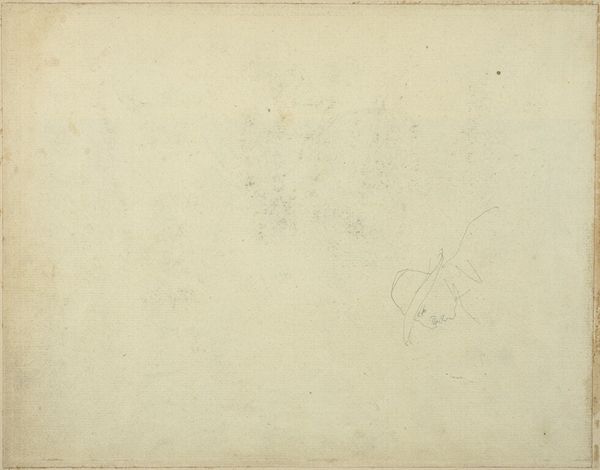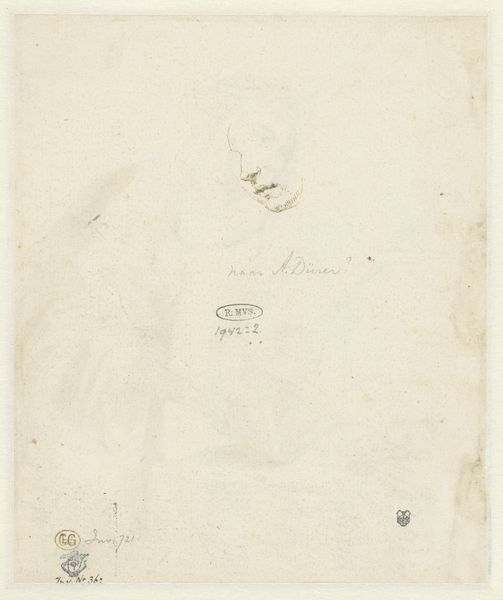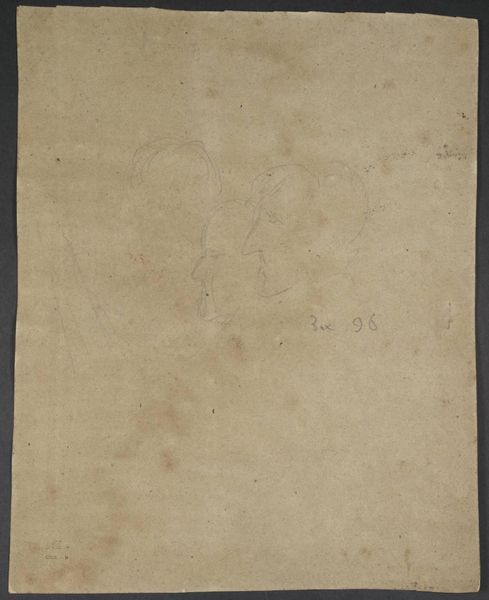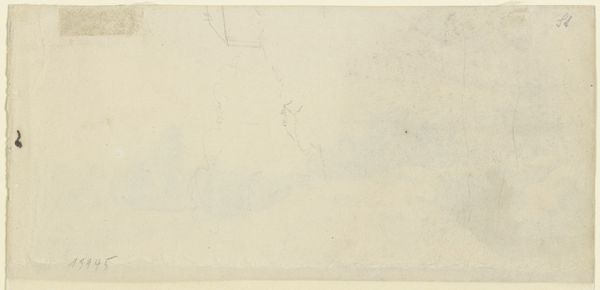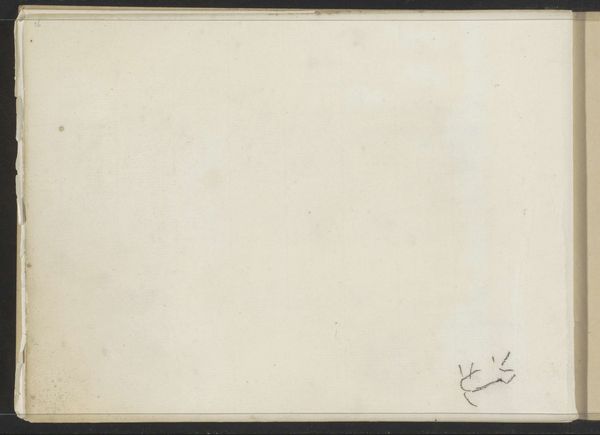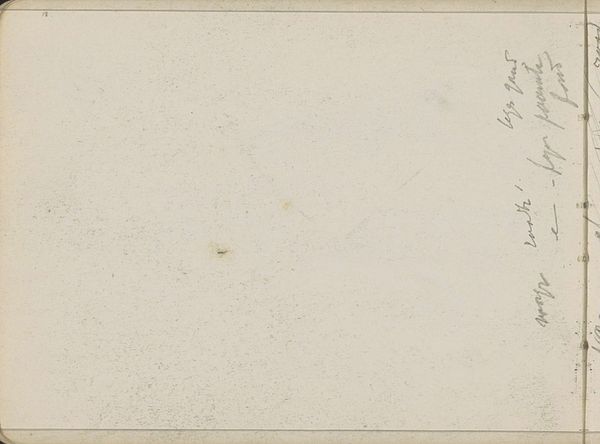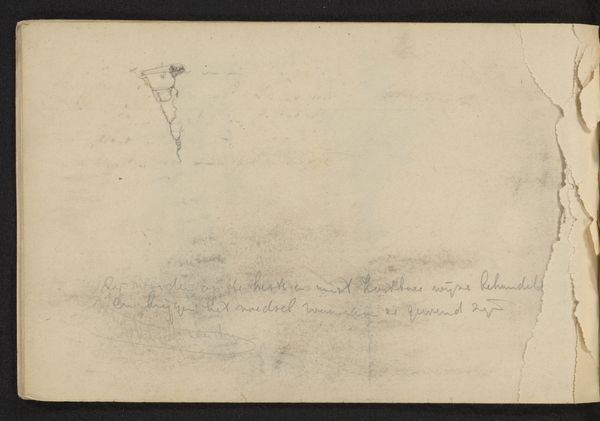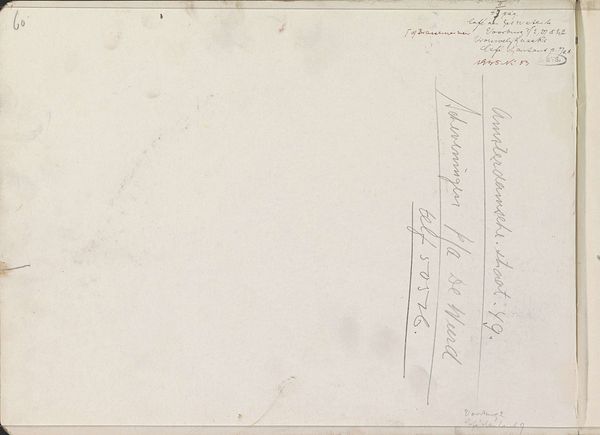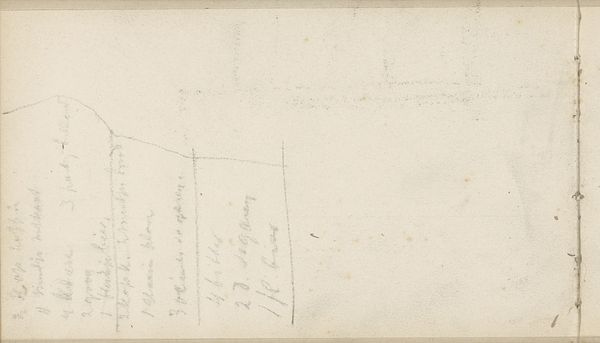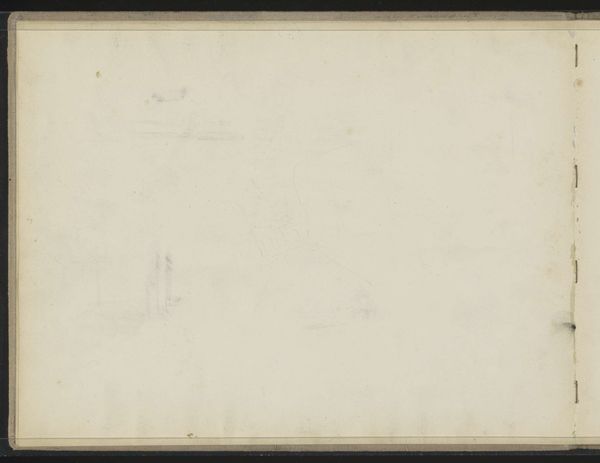
Copyright: Public Domain
Curator: Before us hangs Philipp Otto Runge’s "Zwei flüchtige Studien eines Blattes," or "Two Fleeting Studies of a Leaf," dating from around 1808 or 1809. It's currently held in the Städel Museum’s collection. Editor: Fleeting is the perfect word. I'm getting a whisper of nature here. It feels more like a breath than a detailed botanical study. Almost haunting in its fragility. Curator: Indeed. Runge was deeply influenced by the Romantic movement’s focus on the natural world, but also by contemporary scientific explorations into natural history. Drawings like these served as crucial exercises in observation. Editor: Exercises? Oh, come on! This is poetry disguised as practice! Look at how the pencil lines just barely define the leaf. It’s not trying to capture every vein and serration, it's after the essence, the fleeting quality of life. It feels deeply personal. Curator: I agree, it has a remarkable sensitivity. But Runge’s art was also informed by a social project. He felt art could play a key role in revealing nature’s inherent order and unity. He actually hoped to create a kind of modern mythology, revealing nature's spiritual significance. Editor: Spiritual, yes! But mythology sounds too grand for this little study. To me, it speaks more to the beauty in transience, in the things we might otherwise overlook. The casual elegance of a sketch has more allure to me than polished pronouncements. Curator: Yet Runge yearned for that elevated, pronouncement level of art. And that tension between the fleeting and the permanent, the personal and the universal, animates much of his output. Editor: So, this leaf is more loaded than it looks! It's not just a quick sketch. Curator: It represents both Runge's grounding in observation and his yearning to uncover life's enduring connections through art. Editor: I’ll take away the invitation to really *see*, to not just glance, to seek that secret, almost vanished beauty. Curator: For me, it reveals how even the smallest, simplest drawings participated in much larger aesthetic and philosophical debates.
Comments
No comments
Be the first to comment and join the conversation on the ultimate creative platform.

